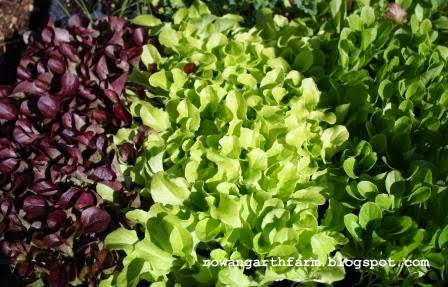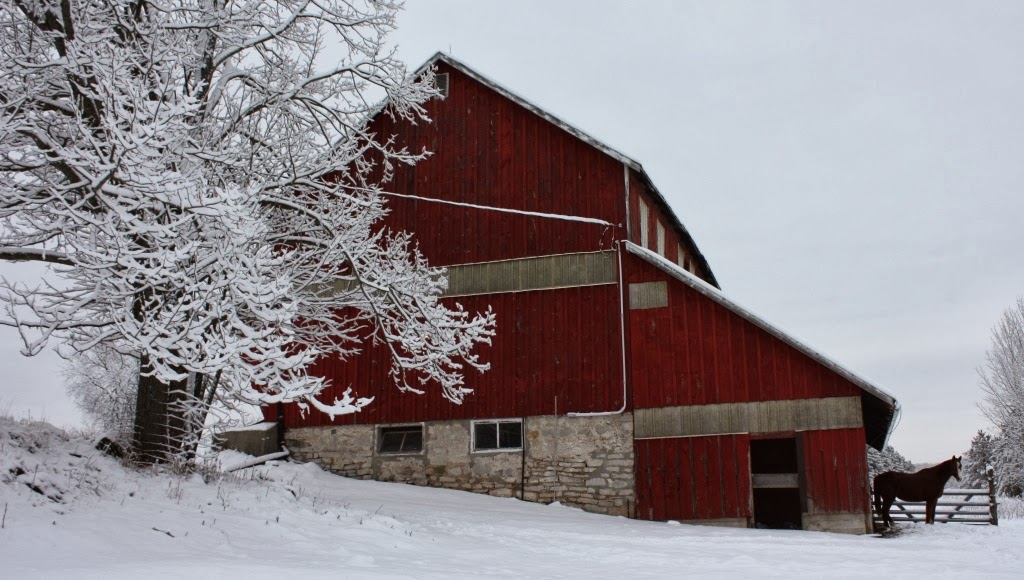Keeping a family cow is a dream for many homesteaders -- a romantic one at that. A cow will produce all the wholesome milk a family could drink, plus beautiful butter, healthful yogurt and delicious artisan cheeses -- without any of the hormones, antibiotics and other medications, or animal cruelty practices associated with conventional industrial farm-sourced dairy products. Her offspring will either expand the bounty (if it's a heifer) or one day put meat on your table (if it's a bull calf).
It's a compelling reason to keep a cow and I've dreamed the dream myself.
But having spent almost four years on the farm I've learned that there's a great divide between dreams and reality. It's easy to spend much time savouring the outputs of the cow without fully considering everything that has to happen to get these glorious dairy products to your belly in the first place. Or maybe I'm just a bit more cautious about getting in over my head…again!
When I first thought about home dairying, I envisioned goats, but now I'm considering other options. That's why I attended a
home dairying workshop on Wednesday -- and I'm thrilled (yes, thrilled!) that I did.
While book learning is wonderful, nothing compares to sitting around a kitchen table with a group of
like-minded farm women (and two husbands, who I'm convinced were there largely for the delicious potluck lunch) with various degrees of experience and know-how. It was a place to swap stories and laughter over when things go well, and share knowledge, support and encouragement for the times farm life does not.
It was like a knitting bee, but we talked cows, not wool. Instead of sipping tea, we tasted the milk from three different heritage breeds -- Jersey, Milking Shorthorn and
Canadian Lineback. Like wine, each had its distinct appearance, taste and finish. My favourite has to be the Jersey -- rich, creamy and smooth!
We started the day with some practical lessons, covering some basic how-
tos on making quark, butter and yogurt.
The quark, a kind of soft cheese-like spread, was so easy to make and didn't require any specialized equipment. It's a great way to use large quantities of milk and can be served plain, or fancied up with fruit for a sweet treat or herbs and garlic for a savoury spread. It also makes for a beautiful photo, had I remembered to pull out my camera!
I'd made butter before by shaking it (a great project to do with kids), but I was impressed by this large-scale motorized butter churn. When the conditions are just right, it'll take cream to butter in 20 minutes. (I was gabbing too much to pay attention to how long it actually took!)

After rinsing the butter in water, it was packed into a beautiful antique wooden press.

Of course it didn't last long in this pristine form as we each smeared it on thick chunks of freshly-made whole grain bread (baked by one of the above-mentioned farm husbands).
I
make my own yogurt, but I usually do so in a small yogurt maker. I've read about other no-tech methods, but I thought this idea so smart and so simple, especially when you're making larger quantities.
Once the milk has been inoculated with the yogurt culture, either from a previous batch or store-bought yogurt, the container is placed in a cooler filled with warm water and within two hours, it's done!

We talked briefly about the basics of cheese making, focusing mostly on mozzarella and a mild cheddar, but it's a much more complicated process with different handling practices, culture requirements, etc., and would be better suited to its own workshop. What was lacking in learning was well compensated by enthusiastic tasting!

After a delicious potluck (farmers lunches are the best!), which included freshly-harvested greens from the
hoop house, we moved onto talking about herd health and management practices.
This is where I feel I have the most to learn. While I'm thinking about (one day) keeping a family cow, I'm intimidated by my perceptions of what that involves -- the daily
milkings, trying to keep up with (or being 'drowned' by) such a steady supply of milk, how to breed (AI vs bull), difficult calving, food-borne illness, providing the proper nutritional needs, and so on.
Here's just a fraction of what I learned:
Choosing the "right" breed (for our particular needs) is so important and will naturally help alleviate some of these concerns. For example, a heritage breed like the Jersey (one of the traditional family cow breeds) is an easy keeper, calves well on her own and on pasture, is a good mother and produces enough, but not too much, milk for a family. What's more, the Jersey isn't a very big cow to manage, which is important when you're (almost!) 5'4" tall.
 The scale isn't quite right, but you can see the height difference between Guinevere, a Jersey, and a large draft horse in behind.
The scale isn't quite right, but you can see the height difference between Guinevere, a Jersey, and a large draft horse in behind.
Next, the farm women shared different strategies for milking -- some milked every day, another milked every other day and a third milked every third or four day (this with the Milking Shorthorns) -- but the commonality was a long 'natural' lactation. Each allowed the calf to nurse for months, not a few weeks, which grew a healthier and happier calf (and cow), and created a manageable milking load. (For example, the farmer who milked ever third day, simply separated the calf the night before, which provided enough milk for the next morning without any ill effects to the cow, i.e. she'd never had a bout with mastitis.)
I have limited experience with milking (I only milked Lucy a few times after the
birth of the triplets, just to syringe feed Archie who needed a boost in the first two days) but now I have a much better understanding of how to get the milk from the cow to the kitchen and beyond. It all starts with creating a scrupulously clean environment -- from the udder to the collecting containers to the storage jars to the final processing.
All the farmers were hand milkers, so I didn't learn about milking machines, but in terms of milking buckets, pails and strainers, stainless steel is the material of choice. I also have some leads as to where I could source these supplies, which isn't as easy as I first thought.

We had a robust conversation about the pros and cons of AI versus breeding with a bull. With AI, you can expose your cow to a wide range of favourable genetics and you can time the breeding (once you get attuned to your cow's heat cycle, which isn't as easy as it sounds -- apparently cows only have a 24 hour "window" within each 21 day cycle) but there can be a lot of bureaucratic red tape and cost (in Ontario, at least) around obtaining and storing the straws, especially if you don't have a local dairy farmer with a freezer handy.
The alternative is to borrow a bull (with only one or two family cows (to stagger the breeding cycles), I wouldn't consider keeping a bull) but that opens up a host of issues around sourcing and transporting the bull, fencing, proper handing, etc. The benefit is he naturally knows when the cow is in heat, which can remove a lot of the guesswork for novice farmers.
Of course no conversation around a home dairy would be complete without talking about food safety, which starts with good herd health and nutrition. This could (and should) be a post on its own but for folks concerned about microbial contamination (this includes you, Dad!) I have a greater understanding of how to enjoy the benefits of fresh milk and reduce the risk of food-borne illness.
It was a long and full day and after a visit to the barn where we visited with the beautiful creatures who shared their bounty with us, we (the women, not the creatures -- they got nose rubs) exchanged hugs, expressions of gratitude and requests to keep in touch.
As for me, I think my next step is to find someone local with a house cow who can teach me more of the practicalities. I'd also like to connect with some local breeders. I won't be bringing a cow to the farm soon -- I have to repair and reconfigure the barn, and fix and install many (many) lengths of fencing, just for a start -- but I'm doing so with the vision that one day this farm could house a family cow. Until then, I'm comforted by the knowing that when questions or problems arise, I now have a community of farm women there to support me.
 I lifted the first lid and let out a loud whoop -- sap!
I lifted the first lid and let out a loud whoop -- sap! There was only about 4" of accumulated sap on the bottom of the bucket, and approximately 2" of it was frozen solid, but it was maple sap all the same.
There was only about 4" of accumulated sap on the bottom of the bucket, and approximately 2" of it was frozen solid, but it was maple sap all the same. I emptied all four buckets -- the first two much fuller than the buckets on the old tree that we'd double tapped (I think we're going to move one of the spiles to another younger tree) -- and dragged the slushy sap home using a sled I'd expropriated from the kids.
I emptied all four buckets -- the first two much fuller than the buckets on the old tree that we'd double tapped (I think we're going to move one of the spiles to another younger tree) -- and dragged the slushy sap home using a sled I'd expropriated from the kids.









































